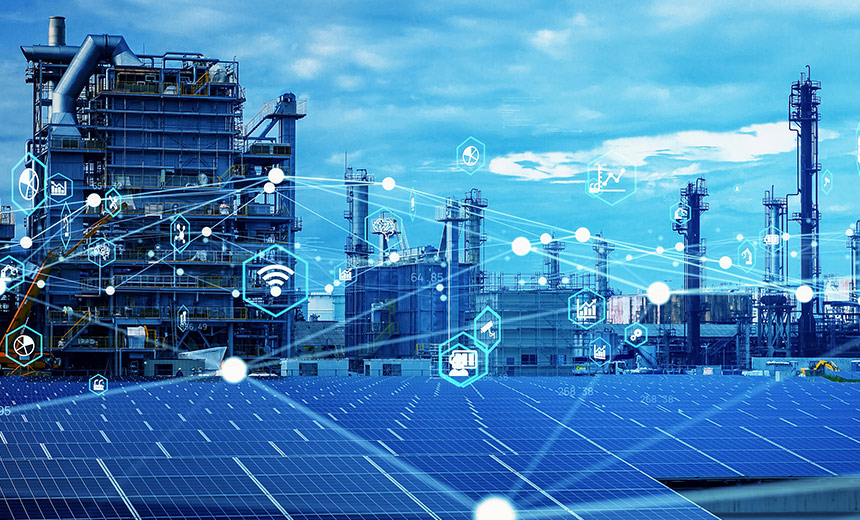Critical Infrastructure Security
,
Finance & Banking
,
Governance & Risk Management
How You Can Help Secure the Nation’s Backbone From Cyberattacks

As a cybersecurity professional, you already possess a strong foundation in protecting digital assets, managing risks and responding to incidents, but moving to a specialty in critical infrastructure security requires an even deeper understanding of the challenges and threats facing sectors such as energy, transportation, healthcare and water systems.
See Also: How to Unlock the Power of Zero Trust Network Access Through a Life Cycle Approach
What Is Critical Infrastructure?
Critical infrastructure encompasses the essential services and assets that are vital to the functioning of society and the economy. These include energy grids, water treatment facilities, transportation networks, healthcare systems and financial services. The security of these sectors is paramount because disruptions can have catastrophic consequences, not just for the targeted sector but for the broader community as well.
Why Specialize in Critical Infrastructure?
Specializing in critical infrastructure security will advance your career, but it also provides a chance to have a tangible impact on national and global security. The stakes are high and the challenges are complex, making this field both demanding and rewarding. As state-sponsored attacks and cyberthreats grow in volume and sophistication, the demand for cybersecurity professionals with expertise in protecting these vital systems is growing.
Sector-Specific Knowledge
To transition to critical infrastructure security, you need to gain a deep understanding of the specific sector you wish to focus on. Each sector has its own unique set of challenges, technologies and regulatory requirements.
Energy
The energy sector – including power grids, oil pipelines and natural gas facilities – is a prime target for cyberattacks. Gaining expertise in industrial control systems, or ICS, and Supervisory Control and Data Acquisition, or SCADA, systems is essential. Familiarize yourself with the North American Electric Reliability Corporation Critical Infrastructure Protection, or NERC CIP, standards, which provide a regulatory framework for securing bulk power systems.
Water and Wastewater Systems
Protecting water treatment plants and distribution systems involves understanding the vulnerabilities of SCADA systems in these environments. Knowledge of chemical and biological hazard prevention is also crucial, as attacks on water infrastructure can have immediate and severe public health consequences.
Healthcare Systems
The healthcare sector faces unique challenges, including protecting patient data and ensuring the continuity of critical care services. With the increasing integration of IoT devices in medical facilities, professionals must be adept at securing both traditional IT systems and connected medical devices.
Transportation Systems
Securing transportation networks requires an understanding of both physical and digital threats and the ability to protect communication systems, GPS and operational controls in sectors such as aviation, railways and maritime transport.
Bridging IT and OT Security
One of the most significant challenges in critical infrastructure security is integrating the needs of both information technology and operational technology. IT security focuses on protecting data and digital systems, and OT security is concerned with the safety and reliability of physical processes controlled by industrial systems.
Key Differences Between IT and OT Security
- Safety vs. security: In OT environments, safety is often the top priority. This means that security measures must be carefully implemented to avoid disrupting critical processes. Understanding this balance is crucial for professionals transitioning to critical infrastructure.
- Legacy systems: Many OT systems are outdated and were not designed with cybersecurity in mind. Securing these systems requires creativity and a deep understanding of both the technologies involved and the potential vulnerabilities.
- Integration challenges: As more OT systems become connected to IT networks, the risk of cyberattacks increases. Professionals must develop strategies to secure these integrated environments without compromising operational efficiency.
Developing Geopolitical Awareness
Securing critical infrastructure requires keeping up with global events and understanding geopolitical dynamics. Many cyberthreats to these vital systems are state-sponsored or politically motivated. For example, during international conflicts, adversaries may target critical infrastructure to destabilize nations or gain strategic advantages.
Why Geopolitical Awareness Matters
- State-sponsored threats: Nations such as Russia, China, Iran and North Korea have been known to conduct cyber operations targeting critical infrastructure. Understanding the geopolitical motivations behind these attacks can help you anticipate and prepare for them.
- Global supply chain vulnerabilities: Many critical infrastructure sectors depend on global supply chains. Geopolitical events that disrupt these supply chains can have cascading effects, making it important to stay informed about international developments.
- Influence operations: In addition to direct cyberattacks, nation-states often engage in influence operations designed to sow discord or undermine trust in critical infrastructure systems. Professionals must be able to recognize and respond to these broader strategic threats.
Networking and Professional Development
Transitioning to a critical infrastructure specialty requires continuous learning and professional development. Use training resources, such as ISMG or CyberEd.io, to receive continuous, up-to-date information. Build a network of peers and mentors within the critical infrastructure community who can offer you valuable insights and opportunities for growth. Consider joining groups such as InfraGard, which is a partnership between the FBI and the private sector focused on protecting critical infrastructure. Sector-specific groups such as EnergySec for the energy sector or H-ISAC for healthcare also can provide insights and networking opportunities.
